A Case I Don’t Talk About Much
I alluded to it today in this comment at Popehat. As is too typical, the published appellate opinion doesn’t accurately reflect the actual facts and arguments at issue as I remember them. But beyond that, I was second chair, and the lawyer who called the shots and I didn’t see eye to eye on the arguments that ultimately made it into the briefs filed in the trial court. I wasn’t involved at all in the appeal. Granted, judging by the opinion the result probably would have been the same even if the arguments I wanted made were made. But I don’t talk much about this case because, given my role, I’m reluctant to accept or disclaim responsibility for it.
The heart of the case, as I saw it, was this: the abortion industry’s widely promulgated claim that abortion is “ten times safer than childbirth” is proved false and misleading by the generally accepted and established scientific fact that childbirth reduces the risk of breast cancer.
The victorious abortion industry also asked for attorney fees in a similar case I lost as lead counsel, but there the trial judge at least had the decency to deny their request, finding that “[t]he Plaintiff’s case, in the Court’s opinion, was obviously not a false and frivolous pleading. And they presented their case well and documented it as they deemed appropriate and so I find no frivolity there.” Indeed, the judge, in denying the Defendant abortion clinic’s motion for judgment as a matter of law at the close of the Plaintiff’s case in chief, had found that “the Plaintiff has submitted substantial evidence on each and every element necessary for its case.”
The heart of that case was this: the “substantial evidence” the trial judge acknowledged the Plaintiff had “documented” proved that the Defendant’s claim in its commercial brochures that “[t]here is no evidence” of a causal relationship between breast cancer and abortion was not just false and misleading but patently absurd.

 Follow
Follow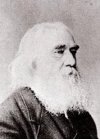
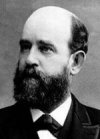
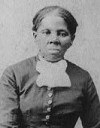



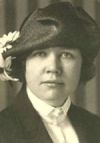

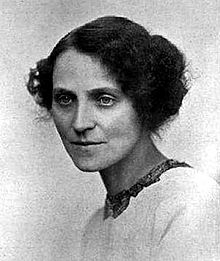


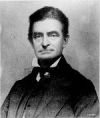
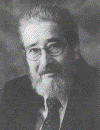
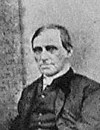


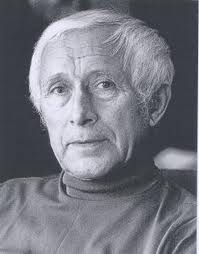
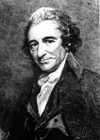

These seems like a classic case of speech versus speech that you turned into a case of speech versus lawsuit. If you think that the way planned parenthood (or their proxies) talked about the health risks and benefits of childbirth presented a skewed picture, the right response is to explain publicly why it is skewed and why your way of looking at things is better. If you can convince people, great.
Instead, you tried to censor them. Boo!
1I suppose then, by your logic, you believe the tobacco industry should have been allowed to continue misrepresenting the scientific evidence linking cigarettes to lung cancer without repercussions? Was that “censorship”? There in fact exist laws against false advertising, and these laws provide for injunctive relief to prevent false advertising. There also in fact exist informed consent laws, which prohibit health care providers from misrepresenting risks to patients. There is no First Amendment right to misrepresent health risks in commercial communications.
2Bah.. you have one due who has staked his whole career on a establishing a certain relationship. The best he can do is a risk ratio of 1.3 with borderline statistical significance. Most scientists disagree with him. http://www.cancer.gov/cancertopics/causes/ere/workshop-report
Do you know what the relative risks were in the case of smoking? 20.
The comparison between these two is ludicrous.
The courts are for going after people who are making demonstrably false claims to intentionally mislead consumers, not to use the power of the state win an argument by fiat that you can’t win the old-fashioned way.
3Don’t know if you’ve read the law review comment I wrote on this subject. Your comment suggests not. Don’t know if you’ve read the briefs, for both plaintiff and defendant, from the North Dakota false advertising case, which cites to the expert testimony at trial, most of which was undisputed. Your comment suggests not. If you can’t see that under ordinary principles of informed consent women considering abortion have a right to be informed of this information before undergoing abortion, and that it is false to claim that the scientific evidence as a whole demonstrates there is no increased risk of breast cancer associated with abortion, I can’t help you see the obvious.
4I read the appellate opinion you linked to in
Agnes BERNARDO et al., Plaintiffs and Appellants,
v.
PLANNED PARENTHOOD FEDERATION OF AMERICA et al., Defendants and Respondents..
That seemed sufficient. What is the statement that you believe you can demonstrate was false and misleading? It seems like the key is that you wanted “an injunction restraining Planned Parenthood from publishing statements that abortion is
1) safe or
2) safer than childbirth and that
3) the weight of credible medical research has failed to establish a link between induced abortion and breast cancer. ”
Let’s focus on 2 and 3, because 1) depends entirely on your definitions of “safe” (is walking across the street safe?).
Starting with 3), it’s the easiest because it is obviously true. I provided the definitive link above.
Now turning to 2, and defining “safe” in terms of mortality. It’s empirically demonstrated to be true in the case of short-run effects (http://www.reuters.com/article/2012/01/23/us-abortion-idUSTRE80M2BS20120123) Now, maybe there are differential long-run consequences (i.e., the purported cancer link). Do you have anything other than cancer, because it’s pretty lame? Remember, the standard is “the weight of credible medical research” not “someone with a PhD. thinks”
—
5More importantly, this seems like exactly the thing that Anti-SLAPP should protect against. You don’t want PP to say what they are saying so you sue them in order to either stop them by injunction or beggar them with attorney fees, even though the evidence for your claims is weak. And don’t take my word for the weakness of them evidence… the 4th district and the AMA and the National Cancer Institute are in my corner, too.
You’re correct that the widely-promulgated claim that abortion is 10 or even 20 times safer than childbirth is based on mortality statistics from immediate complications. But the risk of death from immediate complications from both childbirth and abortion is exceedingly remote. Breast cancer, by contrast, is the leading cause of death among middle-aged women. As my post indicates, it is generally accepted and established as a fact that childbirth significantly decreases breast cancer risk, and that this protective effect is abrogated by an abortion. See the North Dakota brief linked to from the post for why this loss of protective effect proves the “safer” claim to be false and misleading. We provided an affidavit in the Bernardo case which laid out the numbers demonstrating, based on generally accepted and established fact, that, incorporating just this relative increase in breast cancer risk due to this loss of protective effect, childbirth is in fact something like 100 times “safer” than abortion.
Your description of your link as “definitive” just because it comes from the NCI is misbegotten. We took issue with a large number of specific and concrete points in PP’s literature, which were basically the same as the points in the NCI’s literature. (A patently absurd falsehood published by the NCI was at the heart of the North Dakota lawsuit.) One salient example is how the 1997 Melbye study from Denmark has been portrayed, which I address in both my law review article and in the North Dakota brief linked to in the post. Another is the egregiously-ridiculous use made of the Lindefors-Harris study to “prove” recall bias. You can’t judge “the weight of credible medical research” until you’ve actually looked at that medical research, and had the opportunity to examine and cross-examine experts in the field, which is exactly what I did in the North Dakota lawsuit. Truth isn’t a matter of just counting votes, which is why the North Dakota trial judge’s decision was so obviously wrong. We certainly would have known going into these cases that we would lose if it was simply a matter of how many scientists voted how. Einstein famously said, in response to news that a book titled One Hundred Scientists Against Einstein was being published, that were his theory wrong it would have taken just one scientist to show it.
6But did he sue?
7This is getting more and more interesting as a dig into it. Check out these two studies:
http://www.ncbi.nlm.nih.gov/pubmed/18477486
and especially
http://www.ncbi.nlm.nih.gov/pubmed/15051280
I love the conclusion of the Lancet study
—
Pregnancies that end as a spontaneous or induced abortion do not increase a woman’s risk of developing breast cancer. Collectively, the studies of breast cancer with retrospective recording of induced abortion yielded misleading results, possibly because women who had developed breast cancer were, on average, more likely than other women to disclose previous induced abortions.
—
So it explains both the real relationship and why early studies got it wrong. I can literally find nothing on PubMed in the last decade that finds the relationship you posit. Is it a conspiracy?
8Check out this post I wrote a little while ago: http://www.peoplevstate.com/?p=1883
You would have a more fair and balanced understanding of “recall bias” if you bothered to read what I’ve already written on the subject. I’m not going to repeat here what I have already written elsewhere. Check out the law review article and the Reply brief in the North Dakota case. Also, note that the Beral study improperly confounds miscarriages with induced abortions in its conclusions.
Who are you anyway?
9Just some Popehat reader who was interested in an example of the misuse of anti-SLAPP. To be honest, I don’t really have very strong feelings about abortion one way or the other (although I am generically pro-choice). But censorship pisses me off, so I am a strong proponent of anti-SLAPP. But I’m also an economist, so I know laws have costs and benefits, and I was trying get a better feel for the costs of this one.
10I too do not believe that abortion should outlawed, at least during the first trimester. I too am a very strong believer in free speech. But fraud that kills people is an entirely different matter.
11